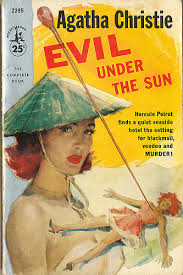A Daughter’s A Daughter by Mary Westmacott (Agatha Christie)
A Daughter’s A Daughter is by Agatha Christie writing as Mary Westmacott. The story was originally published in 1952 and was written as a play.
The story followed a young-ish, middle-aged woman, Ann Prentice, who had been a widow for many years. When Ann’s teenage daughter Sarah went to Switzerland for three weeks of skiing, Ann, who had expected to be lonely at home without Sarah buzzing in and out, met a man and got engaged to him.
Sarah returned and was angry and jealous at being displaced by Richard, Ann’s intended, and set out to break the couple up. Unfortunately Richard didn’t manage Sarah very well and between the two of them constantly bickering, fighting and treating her like the meat in their sandwiches, Ann ended her engagement to Richard.
Fast-forward three years and no one was happy.
Richard had met a married a young woman who was beneath him socially, and was unhappy.
Sarah had fallen in with a bad set, then, to compound her errors, married a genuinely wicked man.
Saddest of all was Ann, who had been quiet, refined and happy before her engagement to Richard. Three years on she drank too much, was nervy, always bored, generally unhappy, but worst of all was resentful of the sacrifice she had made for Sarah.
I feel disloyal to Agatha Christie for saying that I didn’t like this story, or the characters. Sarah’s behaviour was atrocious and Richard’s was ridiculous. I felt sorry for Ann, but I didn’t like the person she became.
Perhaps this story might have worked better as a play.








Recent Comments